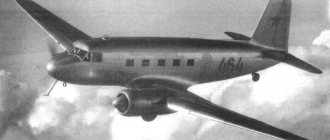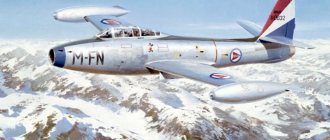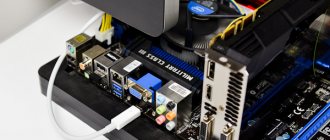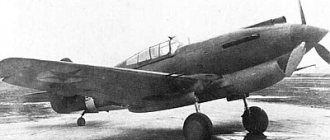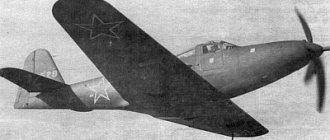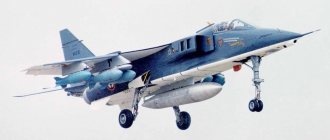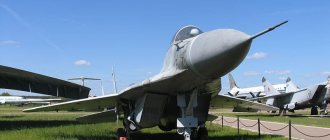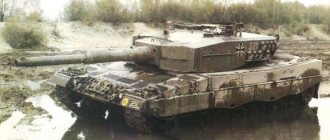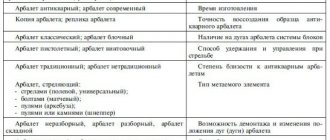Chinese fighter-bomber JH-7 "Flying Leopard"
The Vietnam War had a great influence on the appearance of the Chinese combat aircraft, the development of which began more than 30 years ago. The “main hero” of this war on the part of the American Air Force was the McDonnell Douglas F-4 Phantom II fighter of various modifications. As part of the concept of a universal multi-role heavy fighter, this aircraft carried out missile and bomb attacks on ground targets and, if necessary, conducted air combat. And although in close air combat the Phantom often lost to the lighter and more maneuverable MiGs, its range, acceleration characteristics, electronic equipment complex, radar capabilities and weapons inspired respect. The Phantom became the first multi-role tactical fighter that could use medium-range air combat missiles. Previously, only specialized air defense interceptors had this capability. In addition, it could carry a wide range of missiles and bombs for operations against ground and surface targets, including guided bombs and tactical nuclear munitions.
F-4E Phantom II
The immediate impetus for the development of a new generation fighter-bomber in China was the unpleasant conclusions following the operation to capture the Paracel Islands in 1974. These islands in the South China Sea, then controlled by South Vietnam, were captured by Chinese amphibious landings. The Saigon troops did not offer much resistance, and the islands completely came under the control of the PRC in a short time. The Americans, who had already left Vietnam at that time, chose not to intervene.
Q-5 attack aircraft
The range of Chinese Q-5 attack aircraft and J-6 (MiG-19) fighters did not allow air support for the landing force. And the use of N-5 (Il-28) bombers was ruled out due to fear of large losses that could be caused by the South Vietnamese Air Force, which had F-5E supersonic fighters. The use of Chinese aviation was hampered by the imperfection of navigation and targeting systems, communication and control systems, as well as the lack of modern electronic reconnaissance and electronic warfare equipment. As a result, the PRC fleet was forced to operate without air support, and the first PLA Navy aircraft appeared over the islands only a few hours after they were completely captured.
Chinese N-5 bombers
Events around the Paracel Islands gave a powerful impetus to work on creating a modern attack aircraft. The military leadership of the PRC came to the conclusion that the state of the country's economy and aviation industry would not allow the simultaneous implementation of two independent programs for the creation of strike aircraft systems. As a result, it was decided to develop a single aircraft in two extremely unified versions - for the Air Force and the Navy. The armament of the designed strike aircraft was to include both conventional and guided weapons. The possibility of using tactical nuclear weapons was also envisaged. During preliminary studies and consultations between representatives of various branches of the military, it was concluded that the PLA Navy and Air Force require a supersonic all-weather strike aircraft to replace the H-5 bombers and Q-5 attack aircraft, capable of operating not only in tactical, but also operational depth. At the same time, representatives of the Navy insisted on a twin-engine power plant and a crew of two people (following the example of the Panavia Tornado fighter-bomber).
At the first stage of the program, it was planned to create a new combat aircraft based on the J-8II interceptor. This ensured the unification of the aircraft fleet and significantly reduced the cost of production of “fighter” and strike aircraft systems.
J-8II interceptor
However, the Chinese military had reasonable doubts about the possible effectiveness of this delta-wing aircraft, “tailored” to perform air defense missions, when operating in the range of speeds and altitudes characteristic of a fighter-bomber.
The next contender for this role was the shock Q-6. It was assumed that the Q-6 fighter-bomber would become the Chinese version of the Soviet MiG-23BN fighter-bomber (China had previously received several aircraft of this type from Egypt).
MiG-23BN
It seemed that the use of Soviet technologies and design approaches that were familiar and understandable to Chinese specialists would make it possible to create a new fighter-bomber in a relatively short period of time and at moderate costs.
In this regard, the MiG-23BN did not have a radar, necessary for searching for ground, sea and air targets, and only had a laser range finder. It was decided to install on the new aircraft a radar system from the F-111A aircraft shot down in Vietnam. It included a General Electric AN/APQ-113 surveillance and targeting radar, as well as two special Texas Instruments AN/APQ-110 terrain-following radars.
However, the Chinese radio-electronic industry was unable to reproduce the modern and complex American radio-electronic complex. The lack of the necessary element base required a partial return to tube circuits, which further increased the size and weight of the equipment. The need to place on board the aircraft a system of three radar stations with parabolic antennas, whose dimensions are significantly larger than the RP-22 radar station on the MiG-23S, led to an increase in the size of the fuselage, as well as a change in the entire layout of the fighter-bomber. The air intake of the projected Q-6 from the initially adopted side one (made like the MiG-23) became a ventral one (like the F-16), and the size and weight of the aircraft increased noticeably, reaching the parameters of the Tornado fighter-bomber. The wing sweep system, created in China, turned out to be 12% heavier than the similar Soviet system used on the MiG-23 aircraft. Ultimately, the increase in the weight and dimensions of the equipment could not be kept under control; the situation was further aggravated by the lack of suitable engines in the PRC, which subsequently led to the loss of interest among the PLA leadership in this protracted program.
In 1983, after several years of preliminary research, having analyzed previous work in this direction, the Xi'an Aviation Industrial Association began developing a relatively heavy twin-engine, two-seat, limited maneuverable vehicle, optimized for use from low altitudes. At an early stage of work, the design of a two-seat aircraft was considered, its layout reminiscent of the F-111 and Su-24, with row seating for crew members. The option of a lighter weight category vehicle, similar to the British SEPECAT Jaguar fighter-bomber, the Japanese Mitsubishi F-1 or the Yugoslav-Romanian JUROM IAR-93 Orao, was also considered. However, after weighing all the pros and cons, Chinese experts came to the conclusion that an aircraft close in size and weight to the American Phantom would most fully meet the requirements.
The new aircraft was initially designated H-7 (H for Hongzhaji, or bomber), and was later renamed JH-7 (Jianjiji-Hongzhaji, fighter-bomber). The aircraft was designed according to a normal aerodynamic configuration with a high-mounted wing having a double sweep angle (55 degrees along 1/4 chords at the root and 45 degrees at the tip), an all-moving horizontal tail and a single-tail vertical tail, complemented by a developed ventral ridge.
The avionics of the designed aircraft included a navigation and sighting system that ensured the use of weapons against small-sized ground and sea targets, as well as low-altitude flight. It was assumed that the fighter-bomber would have the ability to conduct defensive air combat using air-to-air missiles. When creating the Type 232H radar, technical solutions were used borrowed from the American AN/APQ 120 radar, several copies of which were dismantled in varying degrees of preservation from F-4E fighters shot down in Vietnam. It was reported that a MiG-21 class fighter can be detected by this radar against the background of free space on a collision course at a range of up to 70-75 km, and a large surface target at 160-175 km. Electronic warfare systems were installed: active “Type 960-2” and passive “Type 914-4”, as well as a system for shooting heat traps.
The crew of the aircraft consisted of two people arranged in a tandem configuration: a pilot and a navigator-operator. The crew members were located in the cockpit under a single canopy with a three-section visor, which provided good visibility in the forward-down direction. The instrumentation complex included traditional electromechanical instruments, a radar indicator in the navigator-operator's cabin, as well as a head-up display (HUD) for the pilot.
Taking advantage of its status as the main fighter against “Soviet hegemony” in the Far East, China managed to purchase Rolls-Royce Spey Mk.202 turbofan engines from the UK. The British installed them on their version of the carrier-based Phantom FG.Mk.1 (F-4K). TRDDF Mk.202 had a thrust of 5450/9200 kg, a weight of 1856 kg, a diameter of 1092 mm and a length of 5205 mm. In terms of static thrust, it was somewhat superior to the General Electric J79 turbofan engine used on American-made Phantom aircraft. However, due to the higher air consumption of the English engine, it was necessary to increase the cross-section of the air intakes, which affected the aerodynamics of the aircraft.
These engines, frankly speaking, turned out to be not very successful - complex and capricious. During the testing and operation of the first JH-7, several aircraft were lost due to engine failure. As further practice of using the Spey Mk.202 engines showed, these turbofan engines turned out to be not entirely suitable for use on supersonic multi-role combat aircraft. But the Chinese didn’t have much choice; no one was in a hurry to sell them any more modern propulsion systems. It should be said that this was the first time in the post-war period when it was decided to equip a Chinese combat aircraft with an engine of Western rather than Soviet design. The first 50 Spey engines for testing and production development were received in 1975. In the same year, an agreement was signed with the British on the joint production of the Spey Mk.202 turbofan engine, which received the Chinese designation WS-9. Until 2003, China could not master the production of a copy of the Spey 202 engine. To continue serial production of the JH-7 and replace engines that had exhausted their service life, in 2001, an additional 90 Speys were purchased from the stock of the Royal Air Force, removed from the British F-4K.
The JH-7 became the first Chinese aircraft to receive “standard” in-flight refueling equipment (an L-shaped fuel receiver was placed on the right side of the forward fuselage). The aircraft could carry up to three external fuel tanks with a capacity of 800 or 1400 liters, which were suspended on two underwing and central ventral external suspension units.
The strike armament of the production aircraft, located on six underwing and one central ventral external suspension assemblies, included subsonic solid-fuel anti-ship missiles YJ-81/C-801K with a launch range of up to 40-50 km, similar to the French Exocet anti-ship missile system (two such missiles were suspended on root underwing nodes), as well as free-fall bombs with a caliber of up to 1500 kg and NAR. For self-defense, pylons for air-to-air missiles with PL-5 type TGS were provided at the wingtips. On the right fuselage “chine” there was a 23-mm double-barreled “Type 23-III” cannon, which was an analogue of the Russian GSh-23L.
The first flight of the JH-7 prototype took place on December 14, 1988. Even before the start of deliveries of the aircraft to combat units, a final split occurred in the views of representatives of the Chinese Air Force and Navy regarding the use of the aircraft and its characteristics. The Air Force wanted an aircraft to replace the Q-5 attack aircraft - one that was resistant to combat damage, capable of breaking through air defenses at high speed and low altitude, resistant to electronic warfare and having modern avionics. The fleet required a cruise missile carrier optimized for searching for enemy ships and operating at a considerable distance from the coast.
The first production aircraft were produced in 1994. A batch of 20 JH-7 fighter-bombers entered trial operation in the 16th Marine Attack Air Regiment of the 6th Aviation Division of the PLA Navy (Eastern Fleet), located near Shanghai. These machines were used to test the weapons system, conduct tests, and also develop principles for the combat use of a fighter-bomber in the interests of the fleet. The JH-7 program developed in deep secrecy. The aircraft was first seen in Chinese state television coverage of a series of PLA exercises in 1995.
And although the JH-7 did not completely satisfy the military, and therefore attempts were made to acquire a more advanced radar and a more powerful and reliable engine in the United States, there was an urgent need to replace the outdated H-5 naval bombers. Therefore, the production and improvement of aircraft continued.
The modernized version of the aircraft, which received updated avionics and armament, first took to the air in 1998, became known as the JH-7A; for the export version of the aircraft, the name FBC-1 “Flying Leopard” was approved. The airframe of the aircraft was strengthened, the most vulnerable areas were covered with armor. The wing and stabilizer received changes, a second ventral fin was added, and the number of hardpoints under each wing console increased.
Assembly of the JH-7A at the XAC plant (Xian Aircraft Company) in Xi'an (Shaanxi Province)
The aircraft gained the ability to use modern guided weapons. The JH-7A received equipment placed in suspended containers, which provides determination of the parameters of the irradiating radar and guidance of the YJ-91 anti-radar missile (Russian Kh-31P), and for illuminating the target when using laser-guided 500 kg caliber bombs made in China with laser guidance. The number of hardpoints has increased to 11.
The armament also included Russian Kh-29L and Kh-29T air-to-surface missiles (in 2002, China purchased about 2,000 of these missiles from Russia, and the deliveries were made not by industry, but from Russian Air Force warehouses), Russian adjustable aircraft KAB-500kr bombs, as well as their Chinese counterparts LT-2 (500 kg). Probably, the aircraft can also use KAB-500L, KAB-1500L-PR and KAB-1500L-F purchased in Russia with a caliber of 1500 kg.
In 2002, the new S-803K anti-ship missile system, designed to equip JH-7A aircraft, entered service. It is equipped with a detachable solid propellant booster and a propulsion jet engine. In the middle section of the trajectory, anti-ship missile guidance is carried out using an inertial navigation system (with radio correction from the carrier aircraft), and in the final section an active radar homing head is used.
The main part of the RCC flight takes place at an altitude of 10-20 m, and in front of the target the missile descends to a height of 3-5 m, which increases its invulnerability from close-range missile defense systems. The maximum launch range is 250-260 km, and the cruising speed of the rocket corresponds to M=0.9.
Advanced electronic warfare equipment installed on the fighter-bomber includes a radar warning system, an active jammer, and containers with thermal traps and dipole reflectors located at the base of the fin.
After the appearance of a new modification of the Flying Leopard with improved combat characteristics, the aircraft entered service with the PLA Air Force in 2004. In many ways, this was a forced measure related to aging and the urgent need to replace the main Chinese light carriers of tactical nuclear weapons - the obsolete Q-5 attack aircraft, created on the basis of the MiG-19.
But even despite serious modernization, the JH-7A fighter-bomber is seriously inferior to modern multi-role strike tactical aircraft such as the Su-30MK2, deliveries of which to Chinese naval aviation began in 2004. Russian Su-30MK2 are superior to the JH-7A in all respects (including when solving strike missions) and are inferior to the Chinese aircraft only in the “comfort” of a long flight at low altitude: this was due to the lower wing load of the Russian aircraft.
The superiority of the Russian aircraft is, in general, natural. The multi-role Su-30 family is a further development of the 4th generation Su-27 heavy fighter. And in terms of its characteristics and technical solutions used during its creation, the JH-7 aircraft can most correctly be compared with the two-seat McDonnell Douglas F-4 Phantom II fighter.
The most revealing may be a comparison of the Chinese fighter-bomber with the F-4K multirole fighter, the English version of the Phantom. The F-4K had an empty weight of about 14,000 kg (for the JH-7 this figure is close to 14,500 kg) and a maximum take-off weight of 25,450 kg (for the JH-7 - 28,480 kg). The mass of fuel in the internal tanks of the Anglo-American aircraft was 6080 kg compared to 6350 kg for the Chinese aircraft, and the mass of weapons located on seven external suspension units could reach 7300 kg (for the JH-7 - 6500 kg).
Having the same power plant as the Phantom, very similar weight characteristics and approximately equal wing load (the wing area of the F-4K is 49.2 m2, and that of the JH-7 is 52.3 m2), the Chinese aircraft had noticeably worse speed characteristics at high altitude (maximum speed corresponded to M=1.7) than its Anglo-American counterpart (M=2.07). At low altitude, the F-4K also had a speed advantage over the JH-7 (1,450 km/h versus 1,200 km/h). The range characteristics of both vehicles were approximately equal (without PTB - 2300-2600 km, ferry with PTB - 3650-3700 km).
When comparing the potential of the on-board radio-electronic systems of American and Chinese aircraft, one must remember that the PRC actively copied the radio-electronic equipment of aircraft shot down in Vietnam, the most popular of which was the Phantom II. It can be assumed with a fair degree of confidence that the JH-7 is equipped with avionics, which largely replicates the Phantom systems and has similar technical characteristics.
If such aircraft of the late 1960s as the F-4K and F-4E can be considered analogues of the JH-7, then the JH-7A fighter-bomber is more appropriately compared with the Phantoms modernized in the 1980-90s (for example, the Israeli " Phantom 2000" or the Japanese F-4EJKai).
The JH-7A aircraft entered service with three naval aviation regiments of the PLA Navy and three regiments of the PLA Air Force. Each regiment equipped with the JH-7A or JH-7 has 18-20 aircraft.
Currently, tests are underway on the JH-7B aircraft, which is a deep modernization of the JH-7 fighter-bomber. It was reported that the development of an LM6 turbofan engine with fairly high parameters (thrust 7300/12500 kgf) was underway especially for this aircraft. It is possible to install the new generation Chinese WS-10A engines on the JH-7B, which develop thrust comparable to the thrust of the AL-31F turbofan engine (i.e., about 12000-13000 kgf). Currently, this engine is at the stage of fine-tuning and launching into mass production. In the design of the airframe, it is planned to widely use stealth technology (in particular, inconspicuous air intakes and radio-absorbing coatings applied to the most “luminous” areas of the surface). The fighter-bomber must also receive a new set of avionics, and the use of radar with AFAR is not excluded. The target equipment of the Chinese-developed radar should ensure flight in terrain following mode.
JH-7B fighter-bomber
Further improvement of the Flying Leopard, and keeping the entire program afloat, is not associated with the high performance of the aircraft. And largely due to the fact that the weapons control system of the Su-30MKK and Su-30MK2 multifunctional aircraft purchased from Russia was technically incompatible with missile systems developed and produced in China (the Chinese simply did not provide Russian developers with information about their missiles). As a result, the JH-7 remained the only carrier in its class of significantly cheaper and more widespread Chinese aircraft strike weapons. In addition, the creation, production and modernization of this aircraft stimulates the development of its own aviation design school, training of specialists and gaining independent experience in creating modern combat aviation systems, even if they do not yet correspond to the most advanced world achievements.
Based on materials from: https://www.aex.ru/docs/4/2011/8/29/1402/ https://www.livingwarbirds.com https://www.flugzeuginfo.net
Modifications
- JH-7
- basic modification. - JH-7 Block 2
- new radar installed. - JH-7A
- modernized version. A new JL-10A radar, a container with a navigation and targeting system, and an AKR-8, a Russian electronic reconnaissance container, were installed. The number of hardpoints has been increased to 11. The range of weapons has expanded due to the installation of new avionics[2]. - FBC-1 Flying Leopard
is an export version of the JH-7. - FBC-1A Flying Leopard II
is an export version of the JH-7A.
Links[edit]
- Fisher, Richard (27 May 2015). "ANALYSIS: Can China overcome the military aircraft engine bottleneck?" . FlightGlobal
. Archived from the original on May 30, 2015. - ^ a b c
Baddeley, Adam (February 2011).
"Air Force Regional Directory AMR 2011" (PDF). Asian Military Review
. Archived from the original (PDF) on September 28, 2011. Retrieved July 11, 2011. - "British and Russian technologies for Xian JH-7A FLOUNDER". US-China Economic and Security Review Commission. Archived from the original on April 29, 2007. Retrieved April 6, 2007.
- Jump up
↑ Focus Aircraft: Xian JH-7 'Flounder'".
International Aviation Review
. Vol. 25. Publishing house AIRtime. 2008. pp. 52–75. ISSN 1473-9917. - "JH-7/A Fighter-Bomber (FBC-1)". SinoDefence.com
. April 13, 2006 Archived from the original on January 15, 2007. Retrieved January 16, 2007. - "JH7 FBC1 Fighter-Bomber and Spey Turbofan, Chinese US Air Force". AirForceWorld.com
. Archived from the original on August 23, 2011. Retrieved July 12, 2011. - Chang, Andrey (December 28, 2007). "Fuel Demand Limits China's Combat Capacity". UPI Asia.com
. Archived from the original on March 1, 2009. Retrieved March 21, 2010. - "Xi'an JH-7". Aeroflight.co.uk
. Archived from the original on May 11, 2008. Retrieved March 21, 2010. - "JH-7A for PLAAF". AirForceWorld.com
. March 25, 2011 Archived from the original on October 18, 2010. Retrieved March 25, 2011. - "中国展示最新型战机直升机头盔瞄准具! [组图] (4)". Military.china.com
(in Chinese). November 13, 2008 Archived from the original on March 8, 2014. Retrieved February 4, 2015. - "中国展示最新型战机直升机头盔瞄准具! [组图] (2)". Military.china.com
(in Chinese). November 13, 2008 Archived from the original on March 8, 2014. Retrieved February 4, 2015. - "严重官泄:歼轰-7A座舱". Military.china.com
(in Chinese). July 15, 2006 Archived from the original on March 28, 2007. Retrieved February 4, 2015. - "JH-7 Avionics". Archived from the original on March 8, 2014. Retrieved November 17, 2011.
- "歼轰 -7诞生记". club.china.com
(in Chinese). January 23, 2009 Archived from the original on January 29, 2009. Retrieved February 4, 2015. - ^ a b c
JH
Accidents ". Archived from the original on March 8, 2014. Retrieved January 3, 2008. - "History of the JH-7". SinoDefence.com
. October 24, 2008 archived from the original on May 17, 2011. Retrieved June 27, 2011. - "JH7/FBC1 Fighter-Bomber". AirForceWorld.com
. October 22, 2014. Archived from the original on September 22, 2014. Retrieved October 23, 2014. - https://lostarmour.info/aflosses/item.php?id=20586
- https://www.bbc.com/news/av/world-asia-pacific-15302692
- https://aviation-safety.net/wikibase/wiki.php?id=166765
- https://aviation-safety.net/wikibase/wiki.php?id=172429
- https://lostarmour.info/aflosses/item.php?id=13731
- Liu, Zhen (12 March 2022). "Two dead in Chinese Navy plane crash". South China Morning Post
. Archived from the original on March 17, 2022. Retrieved March 12, 2019. - https://mh.mbd.baidu.com/7bglxl7?f=cp
- https://lostarmour.info/aflosses/item.php?id=20585
- https://www.janes.com/article/90410/upgraded-jh-7-fighter-bomber-in-service-with-plaaf
- "Chinese fighter jet crashes at airshow". BBC News
. October 14, 2011. Archived August 14, 2012. Retrieved June 20, 2022. - @dafengcao (November 2, 2022). "JH-7E" (tweet) - via Twitter.
- CATIC Brochure, Zhuhai, 1998
- "FBC-1 Fighter-Bomber". CATIC.cn
. China National Aviation Technology Import and Export Corporation. Archived from the original on August 31, 2011. Retrieved April 28, 2012. - "PL-5 short-range missile". SinoDefence.com
. April 9, 2006 Archived from the original on November 11, 2012. Retrieved January 16, 2007. - https://books.google.hr/books?id=TZ1qvo0ToREC&pg=PA195&lpg=PA195&dq=JH-7+pl-12&source=bl&ots=CGsYL74vXF&sig=ACfU3U1Nj2fPEWso0c0Om5lYA9bIgaa8rA&hl=hr&sa=X&ved=2ahUKEwiw1b jmxPPkAhVhmYsKHbWWBEU4ChDoATADegQIChAB#v=onepage&q=JH-7%20pl - 12 & f = false
- "YJ-8K (C-801K) Air-Launched Anti-Ship Missile". SinoDefence.com
. April 9, 2006 archiving from the original to December 30, 2006. Retrieved January 16, 2007. - "YJ-82K (C-802K) Air-Launched Anti-Ship Missile". SinoDefence.com
. April 9, 2006 archiving from the original to December 30, 2006. Retrieved January 16, 2007. - "JH-7A KD-88 Air-to-Surface Missile". AirForceWorld.com
. March 25, 2011 Archived from the original on October 18, 2010. Retrieved March 25, 2011. - "Kh-31P/YJ-91 anti-radiation missile". SinoDefence.com
. April 1, 2006 archiving from the original to December 30, 2006. Retrieved January 16, 2007.
